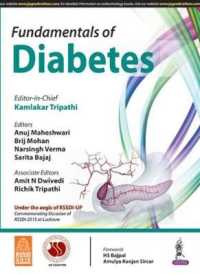- ホーム
- > 洋書
- > ドイツ書
- > Mathematics, Sciences & Technology
- > Earth Science
- > miscellaneous
Full Description
So, limitations and recommendations to mitigate drought events are discussed in detail.The third section discusses groundwater as an important component in the water budget in arid regions.







